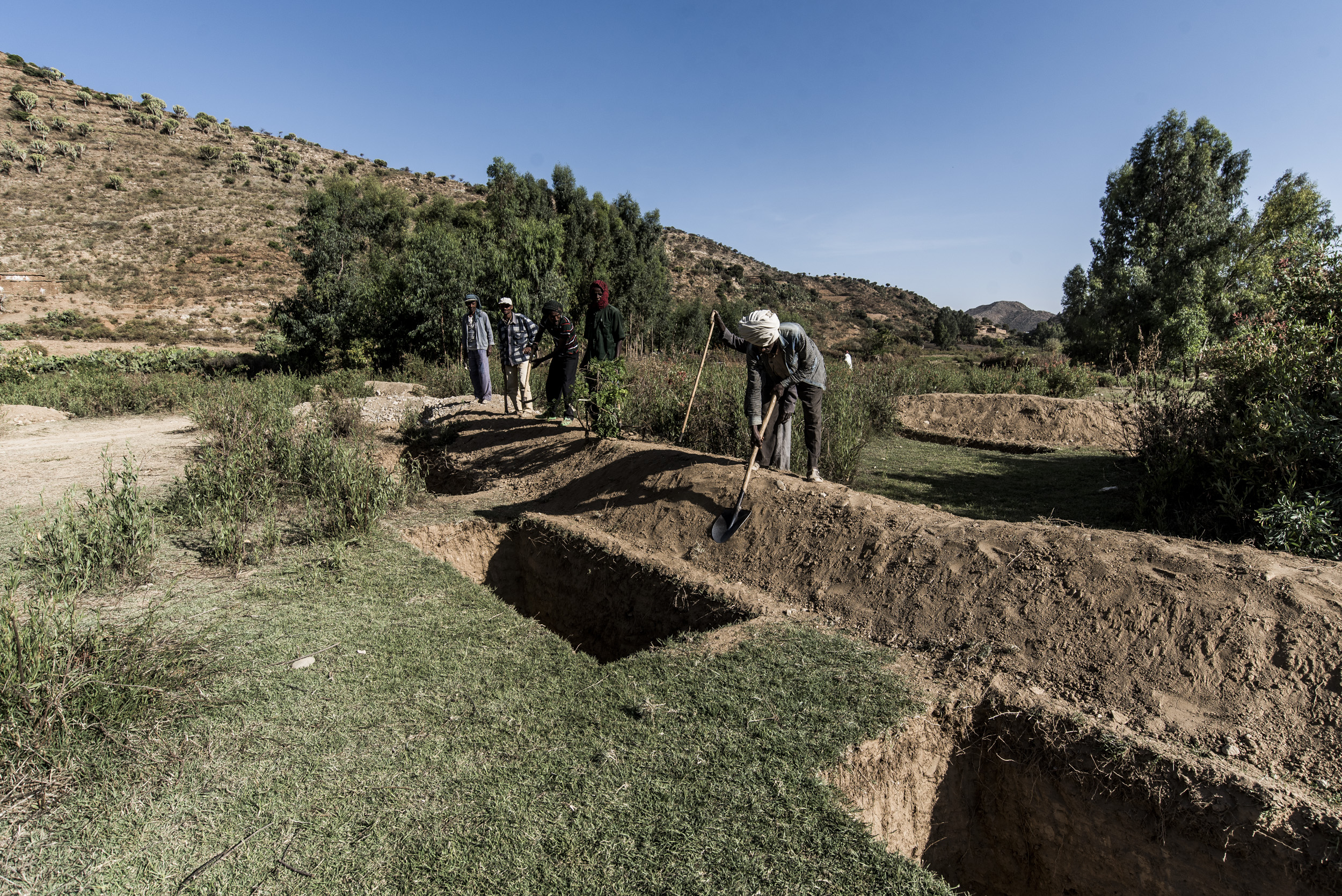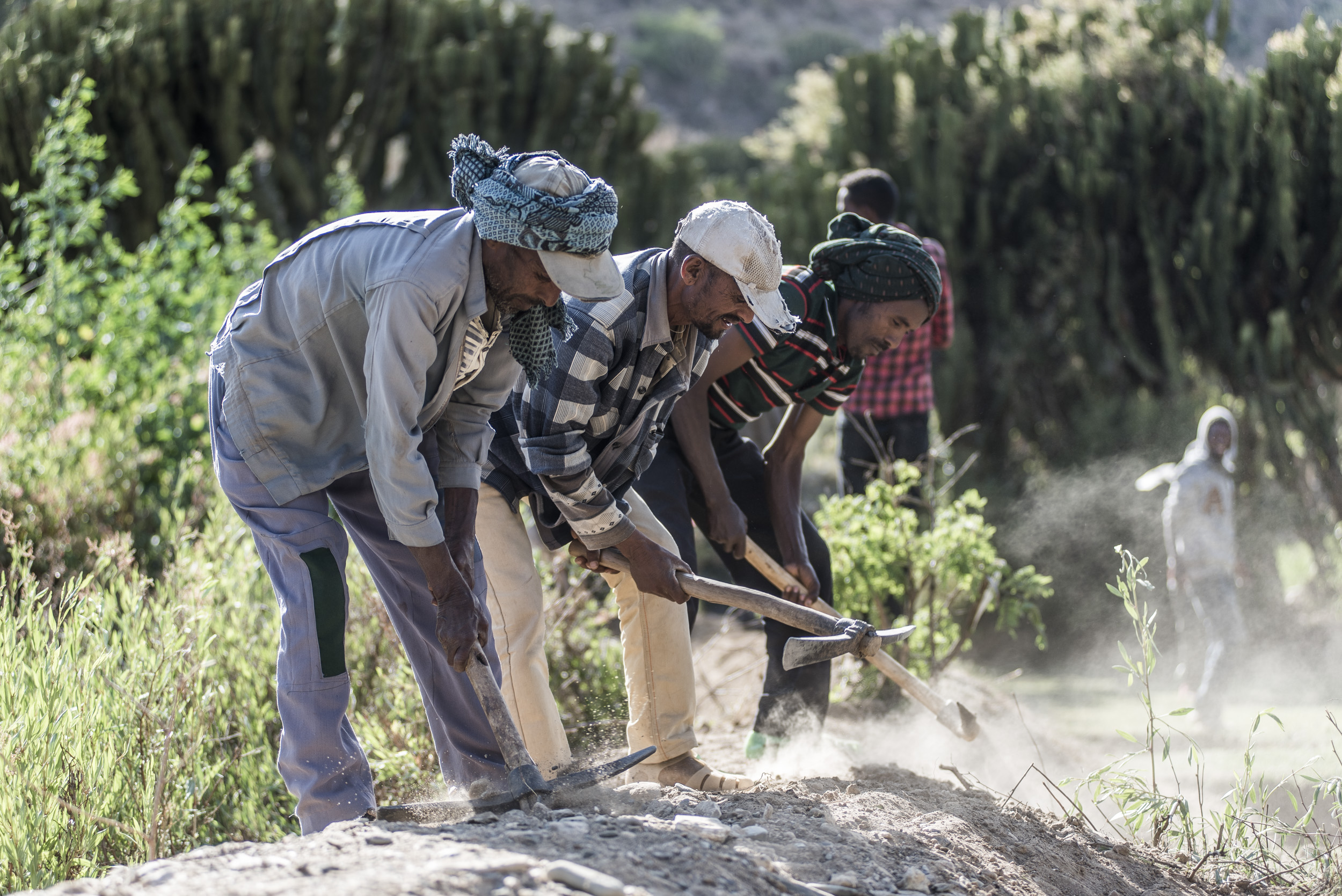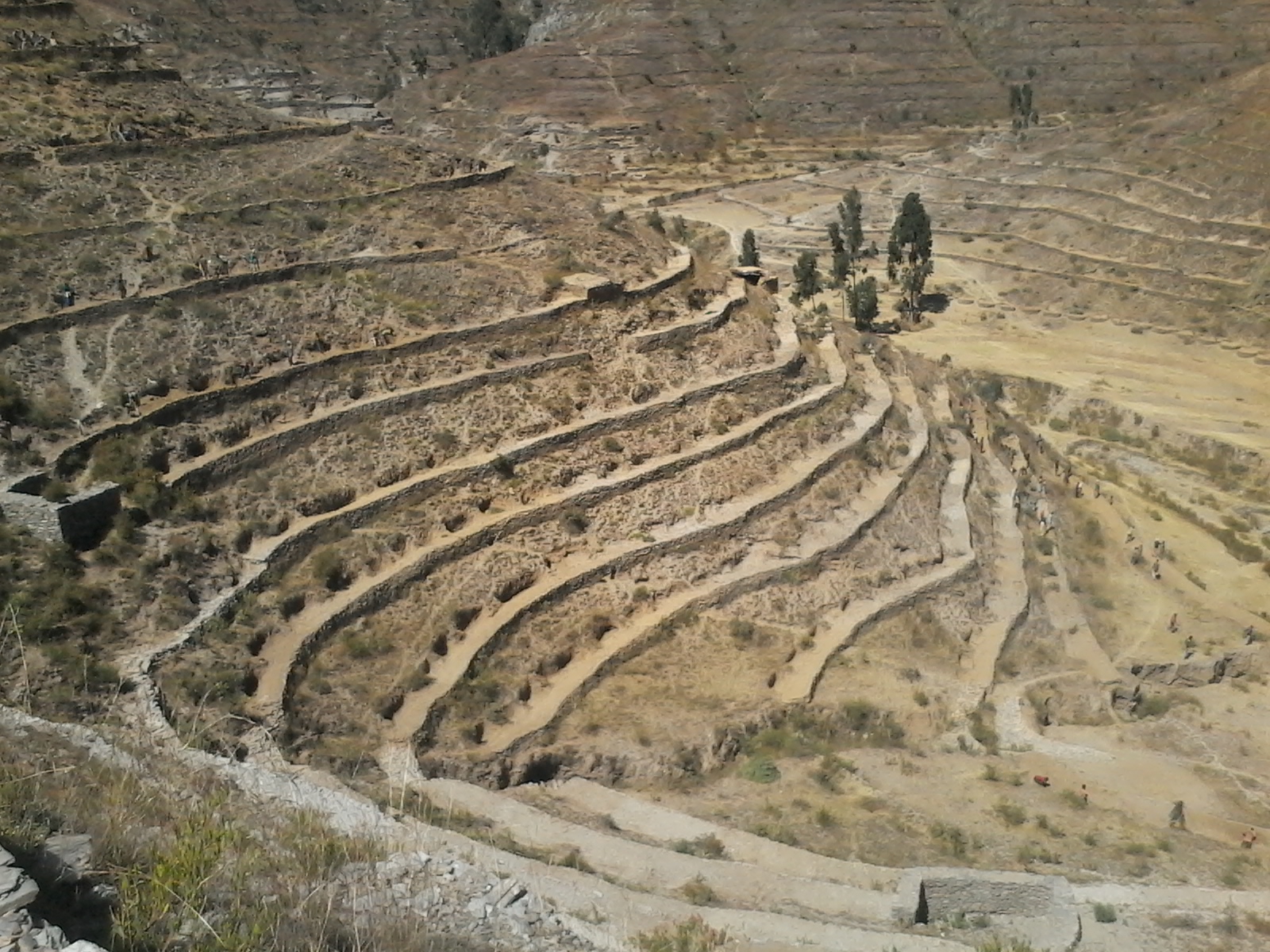



El pastoreo abierto y la tala excesiva en las zonas áridas reducen la cubierta vegetal, haciéndolas propensas a la erosión y causando inundaciones río abajo.
DryDev introdujo la RNFM como un enfoque comunitario de bajo coste que crea consenso sobre cómo gestionar y gobernar las zonas de pastoreo abierto mediante ordenanzas locales (que incluyen multas por incumplimiento). La FMNR utiliza la poda selectiva para ayudar a recuperar árboles y tocones. En las zonas denudadas en las que no hay cepas, se procedió a plantaciones de enriquecimiento para maximizar la cubierta vegetal en las zonas protegidas.
También se utilizaron estructuras físicas, como terrazas, zanjas, medias lunas, diques de contención y estructuras de recuperación de barrancos.
Las estructuras biológicas y físicas en las zonas de pastoreo abiertas (ahora protegidas) propiciaron una rápida recuperación vegetativa, la recuperación de los manantiales y la subida de las aguas subterráneas. Los pequeños propietarios mejoraron su acceso al agua para las necesidades domésticas, para pequeños cultivos y árboles frutales, y para los animales.
- La visión comunitaria era necesaria para recordar a la comunidad cómo era el paisaje antaño e imaginar el estado restaurado.
- Probar nuevas ideas, como la RNMF, en pequeñas parcelas fue útil para los miembros que no estaban seguros de los beneficios. Llevar a los agricultores a las zonas de RNMF existentes y hablar con otros agricultores les convenció de las ventajas. La implicación de las administraciones también contribuyó a la aceptación.
- La recogida de agua contribuyó en gran medida a acelerar la recuperación vegetativa.
Soluciones como la FMNR son de bajo coste, escalables y reproducibles, y se ha observado su adopción espontánea en subcuencas vecinas.